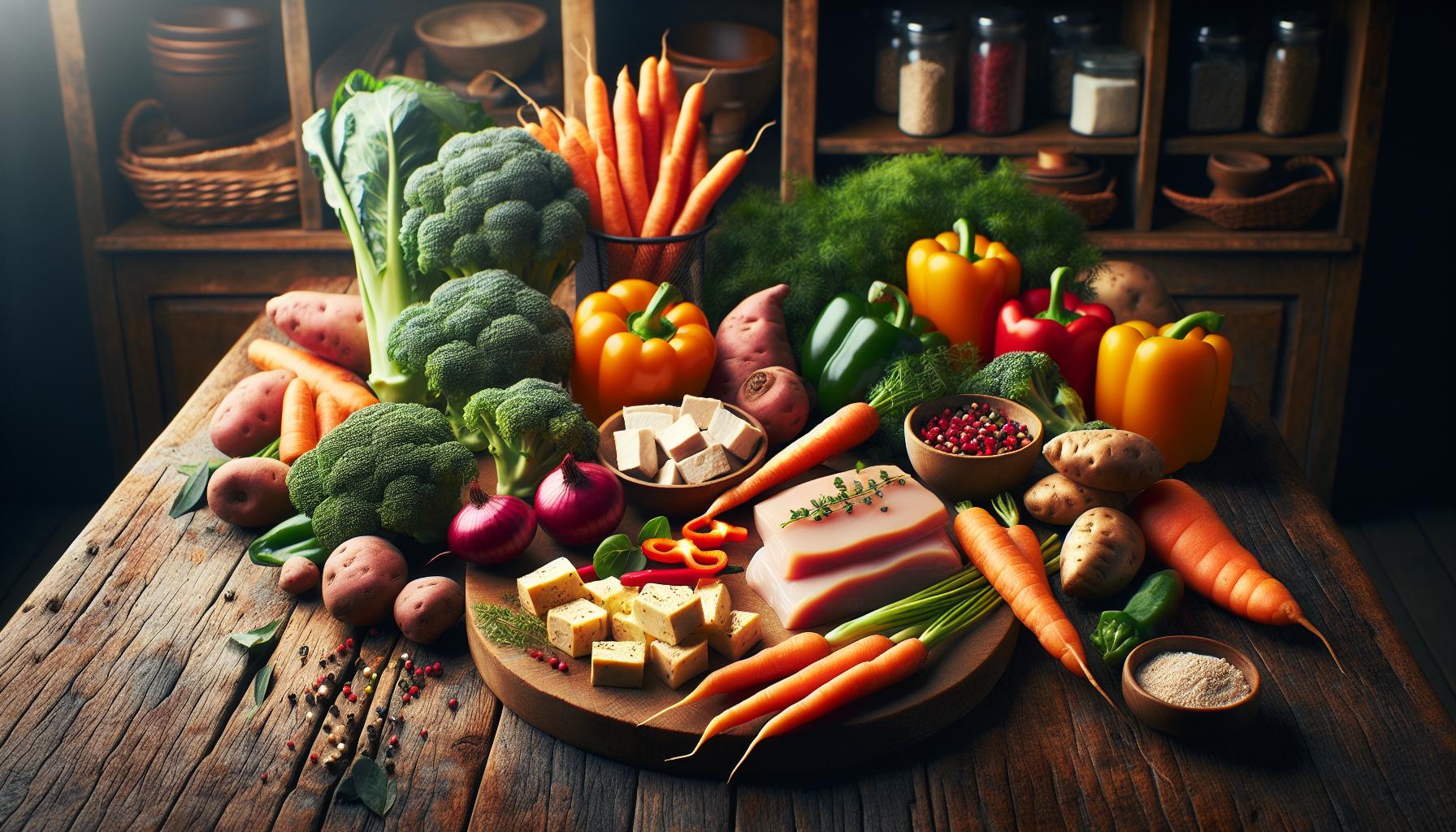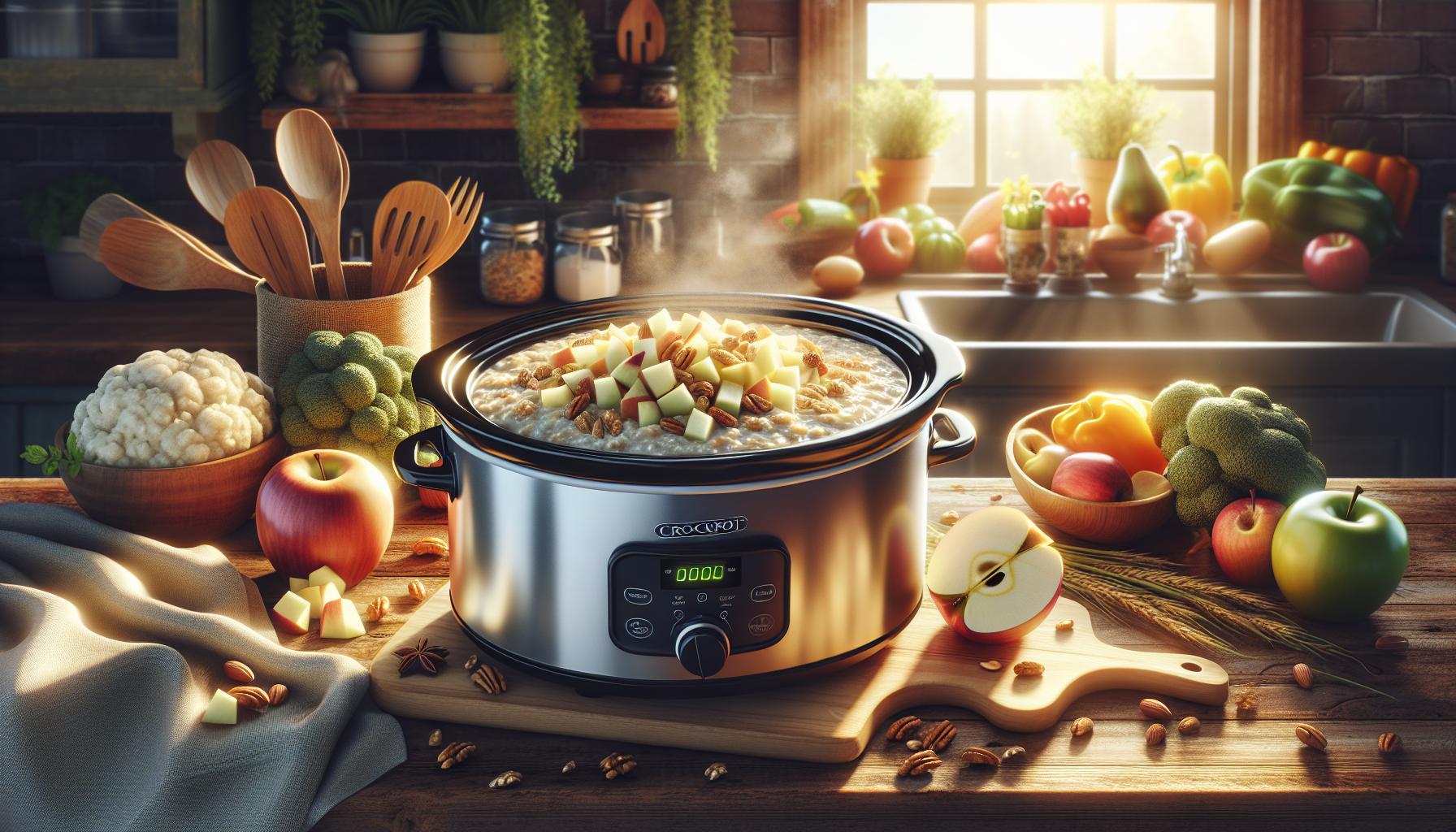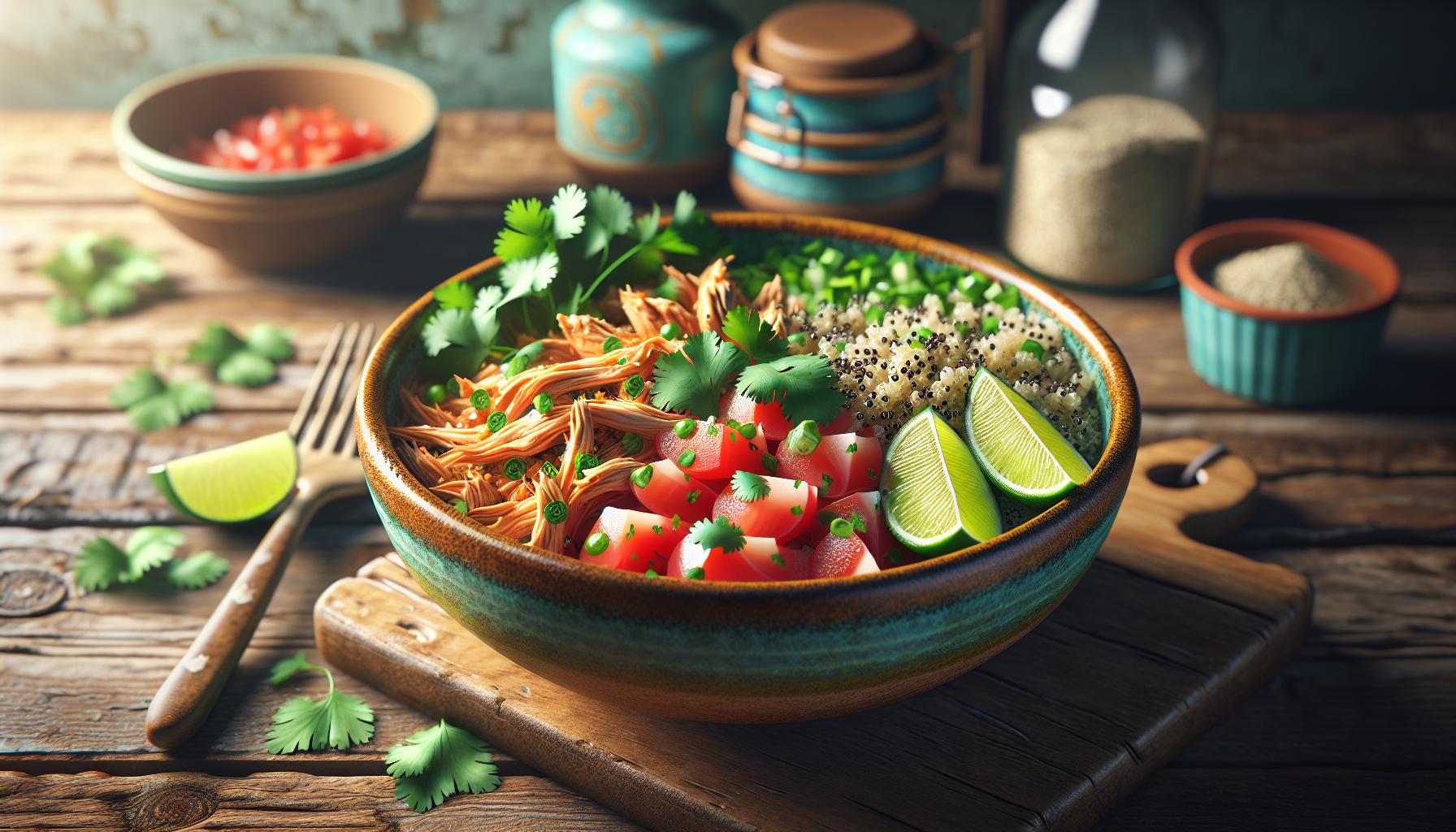Transforming healthy eating from a chore into a breeze is possible with the magic of a crockpot. These set-it-and-forget-it kitchen companions have become the secret weapon for busy folks who want nutritious meals without spending hours in the kitchen. Whether it’s a protein-packed chicken stew or a fiber-rich vegetarian chili, crockpots make healthy cooking practically effortless.
Healthy Easy Crockpot Recipes
Crockpot cooking saves 4-6 hours of active kitchen time per week through hands-off meal preparation. Setting ingredients in the morning creates ready-to-eat meals by dinner time.
Energy efficiency stands out as a key advantage, with crockpots using 70% less electricity than conventional ovens. The low-heat cooking method maintains nutrients in foods like vegetables, lean proteins, and whole grains.
Here’s how crockpots enhance meal preparation:
- Preserves vitamins B C through low-temperature cooking
- Tenderizes tough meat cuts into flavorful dishes
- Reduces food waste by utilizing bulk ingredients
- Creates one-pot meals minimizing cleanup time
- Maintains food moisture eliminating added fats
Cost savings emerge from:
| Benefit | Average Monthly Savings |
|---|---|
| Energy Use | $15-20 |
| Bulk Food Purchase | $40-50 |
| Food Waste Reduction | $25-30 |
| Restaurant Substitution | $100-150 |
The scheduling flexibility allows meal preparation during convenient times:
- Morning setup takes 10-15 minutes
- Programmable timing controls cooking duration
- Auto-warm feature keeps food ready for 4 hours
- Multiple portion cooking enables meal prepping
- Remote monitoring through smart-enabled models
Safety features include:
- Auto shut-off mechanisms
- Cool-touch exteriors
- Secure-fitting lids
- Temperature monitoring
- UL safety certification
These practical advantages combine with the ability to create nutritious meals consistently while maintaining busy schedules.
Essential Ingredients for Healthy Easy Crockpot Recipes

Creating nutritious crockpot meals starts with selecting the right ingredients that maintain their texture and flavor during slow cooking. These foundational components combine to create balanced, wholesome dishes with minimal effort.
Lean Proteins and Plant-Based Options
Lean proteins form the cornerstone of healthy crockpot cooking, with multiple options available for every dietary preference. Skinless chicken breast contains 31g of protein per serving while maintaining its texture during the 6-8 hour cooking process. Turkey breast, lean beef cuts (eye of round, top sirloin), and pork tenderloin provide excellent alternatives with similar protein content. Plant-based proteins like lentils (18g protein per cup), chickpeas (15g protein per cup), and quinoa (8g protein per cup) absorb flavors effectively in slow cooking. Firm tofu (10g protein per serving) stays intact during extended cooking periods when added during the final 2 hours. Fish fillets like cod or salmon work well in crockpots but require shorter 2-3 hour cooking times to prevent overcooking.
Best Vegetables for Slow Cooking
Root vegetables excel in crockpot cooking due to their hearty structure and nutrient retention. Carrots, sweet potatoes, parsnips maintain shape after 8 hours of cooking while absorbing surrounding flavors. Cruciferous vegetables like broccoli, cauliflower, Brussels sprouts retain 82% of their nutrients when added during the final 30 minutes of cooking. Bell peppers, onions, celery create aromatic bases for dishes while providing essential vitamins. Mushrooms release beneficial compounds during slow cooking, enhancing both flavor and nutritional content. Leafy greens like kale, spinach, Swiss chard boost mineral content when added in the last 15 minutes. Dense vegetables like butternut squash, potatoes, turnips require placement at the bottom of the pot for even cooking.
Healthy Easy Crockpot Recipes For Breakfast

Crockpots transform ordinary breakfast ingredients into nutritious morning meals while you sleep. These hands-off breakfast recipes combine wholesome ingredients with overnight cooking for fresh, hot meals ready at dawn.
Overnight Steel-Cut Oatmeal
Steel-cut oats simmer in the crockpot for 6-8 hours, creating a creamy texture packed with 7g of protein per serving. The recipe combines 2 cups of steel-cut oats, 8 cups of water or milk, 2 diced apples, 1 tablespoon of cinnamon and ¼ cup of maple syrup. Adding chopped nuts like almonds or walnuts provides healthy fats and extra protein. This fiber-rich breakfast contains 40% of daily fiber needs per serving when made with whole grain steel-cut oats. The slow cooking process releases beta-glucan, a soluble fiber that helps maintain steady blood sugar levels throughout the morning.
Egg and Vegetable Casserole
This protein-rich breakfast casserole combines 12 beaten eggs with 2 cups of diced vegetables like bell peppers, spinach and mushrooms. The base includes 1 cup of low-fat milk and 1 cup of reduced-fat cheese for calcium benefits while keeping saturated fat content low. Fresh herbs such as chives, parsley or dill enhance flavor without added sodium. Cooking on low for 6-7 hours creates a fluffy texture while maintaining the eggs’ protein quality. Each serving provides 15g of protein and 4 different vegetables, meeting 25% of daily vegetable requirements.
Protein-Packed Main Dish Recipes

Crockpot cooking makes creating protein-rich meals effortless and convenient. These nutrient-dense recipes deliver essential amino acids while requiring minimal preparation time.
Shredded Chicken and Quinoa Bowl
This protein-packed bowl combines lean chicken breast with fiber-rich quinoa for a complete meal. Place 4 chicken breasts with 2 cups quinoa 4 cups low-sodium broth cumin paprika garlic powder in the crockpot. Cook on low for 6 hours until the chicken shreds easily with two forks. The quinoa absorbs the savory chicken flavors while providing 8g of protein per serving. Adding black beans increases the protein content to 15g per serving while introducing beneficial fiber. Top with fresh cilantro diced tomatoes lime wedges for extra nutrients texture.
Turkey and Sweet Potato Chili
This hearty chili combines lean ground turkey with nutrient-dense sweet potatoes for a satisfying meal. Brown 2 pounds ground turkey then transfer to the crockpot with 3 diced sweet potatoes black beans diced tomatoes chili powder cumin. Cook on low for 7 hours until sweet potatoes turn tender. Each serving contains 25g protein 8g fiber from the combination of turkey beans vegetables. The sweet potatoes provide beta carotene vitamin A while keeping the dish naturally sweet. Add Greek yogurt fresh avocado as toppings for extra protein healthy fats.
Light Soup and Stew Options
Crockpot soups and stews create satisfying meals with minimal calories. These recipes combine fresh ingredients with herbs and spices for maximum flavor without added fats.
Mediterranean Vegetable Soup
Mediterranean vegetable soup blends zucchini, tomatoes, bell peppers, carrots and garbanzo beans into a light yet filling dish. Dried herbs like oregano, basil and thyme infuse the broth during the 4-6 hour cooking process. One serving contains 125 calories while providing 8g of protein and 6g of fiber. The combination of vegetables delivers essential vitamins A and C plus potassium. Fresh lemon juice added at serving brightens the flavors and adds vitamin C.
| Nutrient | Amount per Serving |
|---|---|
| Calories | 125 |
| Protein | 8g |
| Fiber | 6g |
| Cooking Time | 4-6 hours |
Lentil and Spinach Stew
Lentil and spinach stew pairs red lentils with fresh spinach leaves in a tomato-based broth. Garlic, cumin and paprika create depth of flavor during the 6-hour slow cooking process. Each bowl delivers 15g of plant protein and 12g of fiber. Fresh ginger and turmeric add anti-inflammatory properties to this nutrient-dense meal. Baby spinach stirred in during the final 30 minutes maintains its bright color and preserves nutrients.
| Nutrient | Amount per Serving |
|---|---|
| Protein | 15g |
| Fiber | 12g |
| Cook Time | 6 hours |
| Final Spinach Add | Last 30 mins |
Tips for Healthier Crockpot Cooking
Set the temperature appropriately: Low setting (170°F-190°F) maintains nutrients better than high setting (290°F-310°F).
Choose lean proteins:
- Remove visible fat from meat before cooking
- Trim skin from poultry
- Place meat on top of vegetables to drain excess fat
- Use a fat separator for broths or gravies
Enhance flavor without added fats:
- Add herbs in the last hour of cooking
- Include aromatic vegetables (onions, celery, garlic)
- Layer vegetables at the bottom to absorb flavors
- Use low sodium broth instead of water
Optimize vegetable cooking:
- Cut vegetables in uniform sizes for even cooking
- Place root vegetables at the bottom
- Add leafy greens during final 30 minutes
- Keep lid closed to retain heat energy
Portion control strategies:
- Fill crockpot 1/2 to 2/3 full for optimal cooking
- Use measuring cups for ingredients
- Divide finished meals into single servings
- Store extras in portioned containers
- Thaw frozen ingredients completely before cooking
- Keep perishables refrigerated until use
- Use food thermometer to verify 165°F internal temperature
- Transfer leftovers to containers within 2 hours
| Temperature Settings | Cooking Time | Best For |
|---|---|---|
| Low (170°F-190°F) | 8-10 hours | Tough meats, legumes |
| High (290°F-310°F) | 4-6 hours | Tender cuts, vegetables |
| Warm (165°F) | Up to 4 hours | Holding temperature |
Meal Prep and Storage Guidelines
Crockpot meals stay fresh in airtight containers for up to 4 days in the refrigerator. Storing portions in single-serving glass containers supports portion control while maintaining food quality. Freezing cooked meals extends their shelf life to 3 months when stored at 0°F or below.
Food Safety Temperature Guidelines
| Stage | Temperature | Time |
|---|---|---|
| Hot Holding | Above 140°F | Up to 2 hours |
| Refrigeration | Below 40°F | 3-4 days |
| Freezing | 0°F or below | 2-3 months |
Storage Tips
- Label containers with cooking dates using waterproof markers
- Cool food completely before transferring to storage containers
- Leave 1 inch headspace in containers for food expansion
- Store raw ingredients separately from cooked portions
- Divide large batches into meal sized portions
Reheating Instructions
- Microwave individual portions for 2-3 minutes stirring halfway
- Heat refrigerated portions in crockpot on low for 2 hours
- Thaw frozen meals overnight in refrigerator
- Check internal temperature reaches 165°F before serving
- Add fresh herbs or citrus after reheating
- Cook base proteins in bulk (chicken breasts, ground turkey)
- Prepare vegetable mixes for multiple recipes
- Double recipes to freeze extra portions
- Package ingredients for future crockpot meals
- Store precut vegetables in airtight containers
Combination of Convenience Nutrition And Cost-effectiveness
Healthy easy crockpot recipes offer an unbeatable combination of convenience nutrition and cost-effectiveness. These set-and-forget meals transform everyday ingredients into delicious dishes while preserving nutrients and maximizing flavor. From protein-packed breakfasts to light yet satisfying soups anyone can create nutritious meals that fit their busy lifestyle.
With proper meal prep storage guidelines and safety measures crockpot cooking isn’t just about saving time – it’s about making healthy eating sustainable. Whether someone’s a busy professional parent or health enthusiast these recipes prove that nutritious home-cooked meals don’t require hours in the kitchen or complex culinary skills.

